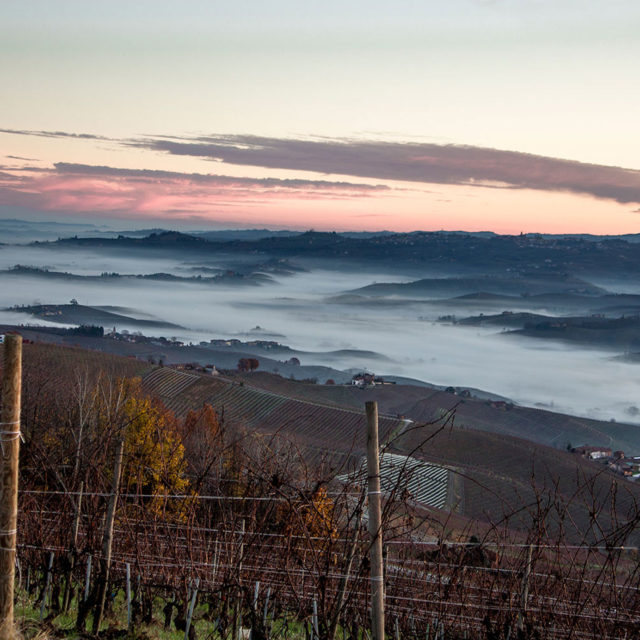Italy’s Barolo region is “kind of a magical place,” says Jamie Wolff, partner at Chambers Street Wines in New York City.
It’s not exactly a controversial opinion. Barolo and its Nebbiolo-based wines have enchanted many wine lovers, earning such nicknames as “The Wine of Kings” and “The King of Wines.” In the 2015 edition of her book, “The Wine Bible,” Karen MacNeill calls Barolo wines “supremely complex and riveting.”
That said, “there’s a lot of underperforming Barolo out there, ranging from awful to boring,” Wolff warns. “It’s now a very successful place, but I think a lot of poor-quality wine is made and a lot of it is sold.”
How did this happen? Some point to late-20th-century Barolo winemakers, who sought top scores from international critics by emphasizing ripe fruit with shorter, more intense fermentations in newer, smaller casks. (In one scene in the 2014 film “Barolo Boys,” which is set in the 1980s, winemaker Elio Altare destroys his family’s grand old casks with a chainsaw. His father promptly disinherits him.) This style of Barolo was a smashing success abroad, “more in line with the international standards promoted by Robert Parker,” according to WineEconomics.org journalist Alessandro Corsi.
Today, though, as the wine community moves away from Parker’s influence, where exactly does that leave Barolo? Ask winemakers Elio Sandri and Giulia Negri, who are both making their name in Barolo for prioritizing the vineyard over tinkering in the cellar. By focusing on terroir, highlighting the natural attributes of their fruit and manipulating the juice less in the winery, these next-generation winemakers are returning Barolo to its rightful glory.
“Many producers do not listen to what their soils tell them, says Sandri, because “they may fear they may get less competitive wines. Some winemakers look for perfection and opulence in wines that do not have the potential and skip other peculiarities of their own terroir.”
“Unfortunately, in the search for perfection, many wines get away from the simplicity of fermentation.” Sandri adds.
For winemakers who care less about “perfection” and more about the expression of their terroir, this means working differently, both in the vineyard and the cellar. For one, that may mean fewer oak flavors extracted into the wine.
“Barolo, by local regulation, has to be aged in wood,” Wolff explains. However, each winemaker “has a choice of the kind of wood, the size of the wood, the treatment of the wood.” Though Wolff says that “what we like in wine is subjective,” he believes that “winemaking can really spoil the wine if you’re looking for wine as an expression of a particular place and of the grape itself.
“I think the best potential expression of Nebbiolo is spoiled when the aromas and flavors of wood are very present in the wine,” he says.
Sandri agrees. “Wood is an ideal wine container, it lets the wine breathe and can add aroma, but sometimes the wines get excessive oak extraction,” he says. “If we were able to isolate these [oak extraction notes] and put them into a glass of water, it would be like a ‘wood tea’ that nobody would drink.”
For this reason, Sandri uses larger barrels that allow the wine to breathe without the flavor of the wood seeping in.
Giulia Negri, who took over her family’s estate in 2014 at the ripe old age of 24, works similarly. After taking over, she gradually has replaced her family’s smaller barrels with “botti grandi” (bigger barrels).
“I want to respect my grapes,” she says. “I want to take all the elegance and power that Nebbiolo can give, while touching it the least that I can.” Negri, who has become known as “Barologirl,” believes that “vinification is less important than what I do in the vineyards.”
For both Sandri and Negri, this means organic farming and respecting the natural cycles of the land. “Quality is more important than quantity,” says Negri. Sandri feels similarly, saying that “rather than going for a ‘content world record,’” he goes for a “balance record.” Both speak to the importance of tasting and listening to their wines.
“In the cellar, every wine barrel needs to be ‘felt,’ every wine requires time and attention,” says Sandri, who tastes each wine almost daily. “It’s less a philosophy,” Negri says, “and more that I just smell and taste all the time.”
Making wine this way is slow and will never be a mega-business. Giulia made fewer than 40,000 bottles last year. Elio’s production is around 10,000 bottles. But, if you can find the wines, they speak of a whole new way of making Barolo (or perhaps just returning to the old ways of making Barolo).
These methods are “fundamentally nothing innovative,” says Wolff. “In fact, it’s pretty much how wine used to be made in Barolo before a lot of modern technique, including the use of a lot of small new barrels, was introduced to the area.”
While Negri and Sandri aren’t yet household names, their acclaim is growing. Negri, at 28, is now imported to the U.S. by Kermit Lynch, who says her wines are already “among the region’s classics.” Sandri’s wines have been called “world class and just under the radar.”
“I do think Elio and Giulia make a really interesting pair,” says Wolff, “because they’re not working all that differently, but the expression, to my taste, is quite different, which has to do with where their vines are and where they come from.”
Making wine in Barolo this way means “expressing art with precious material,” Sandri says. It means “thoughtfulness and integrity,” says Wolff, and what Negri calls “discovery.”
“In Barolo, the more I know, the less I know,” Wolff says.
